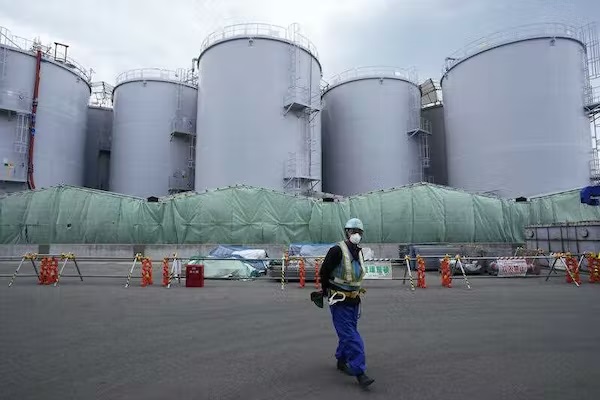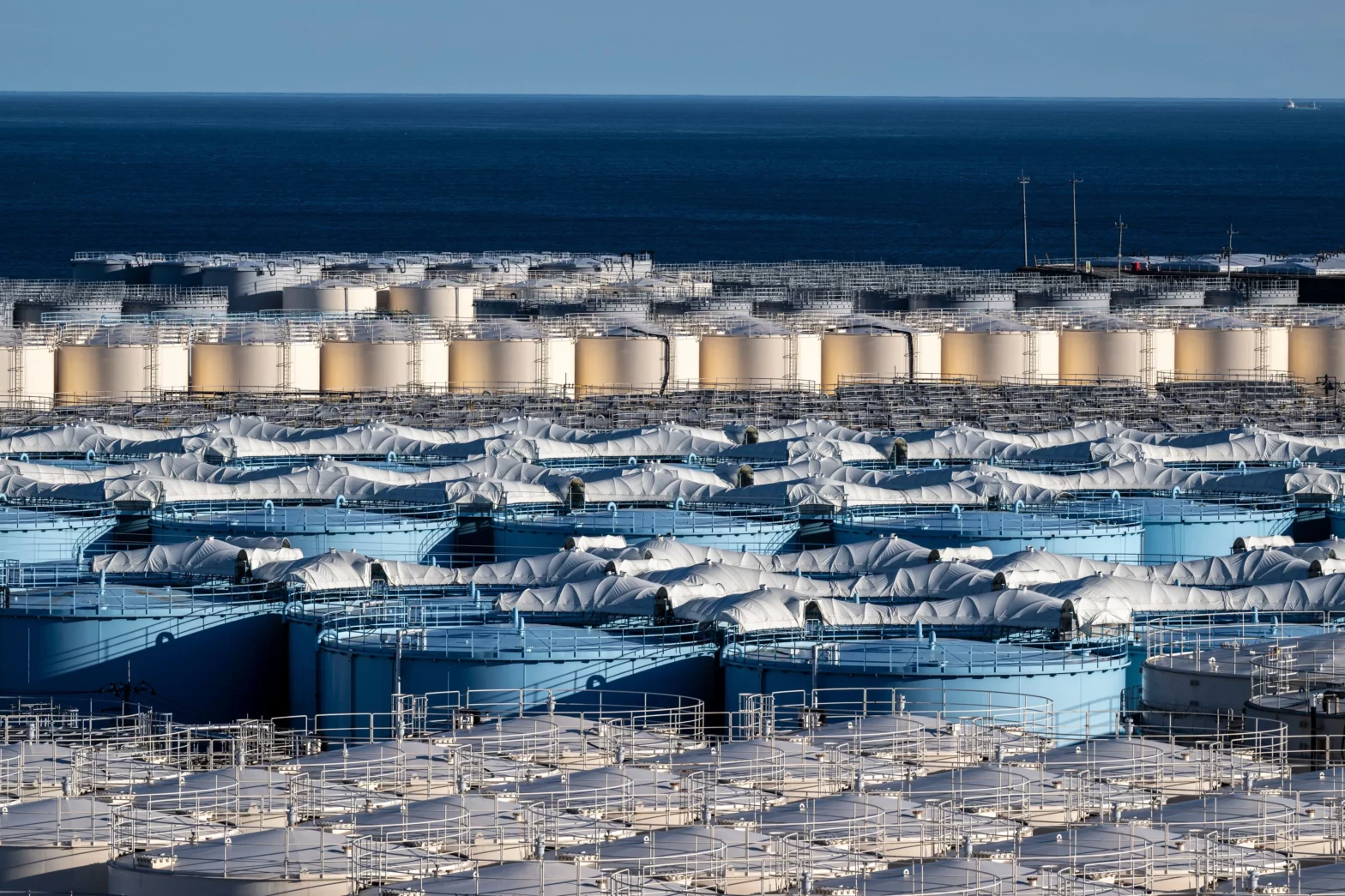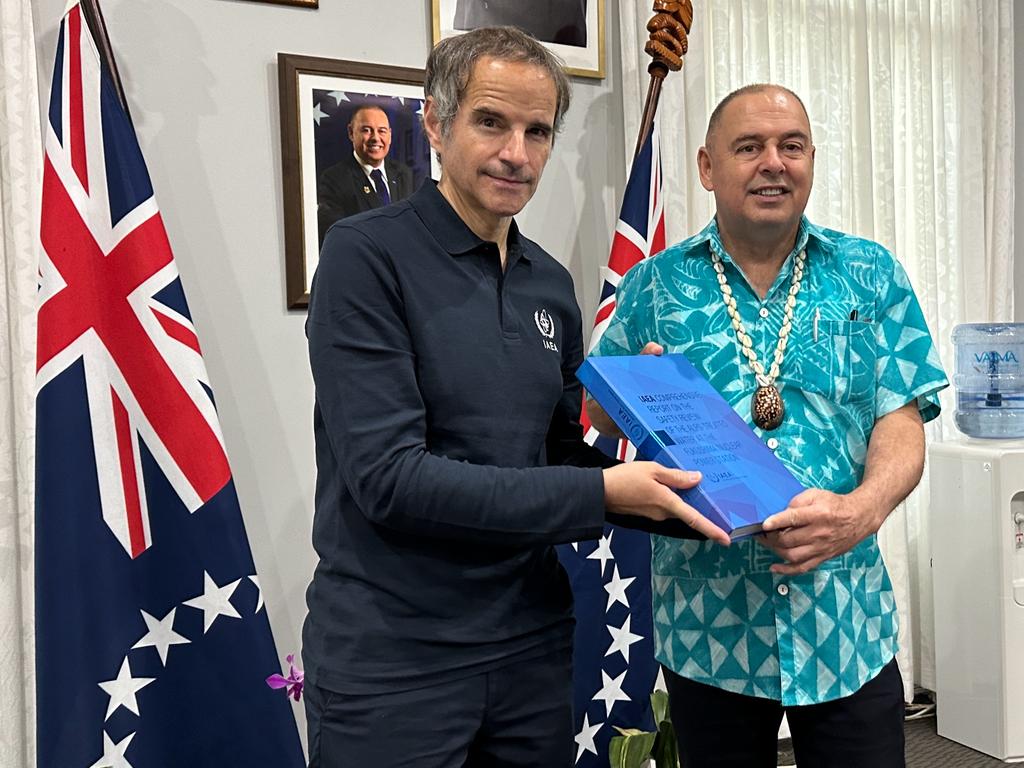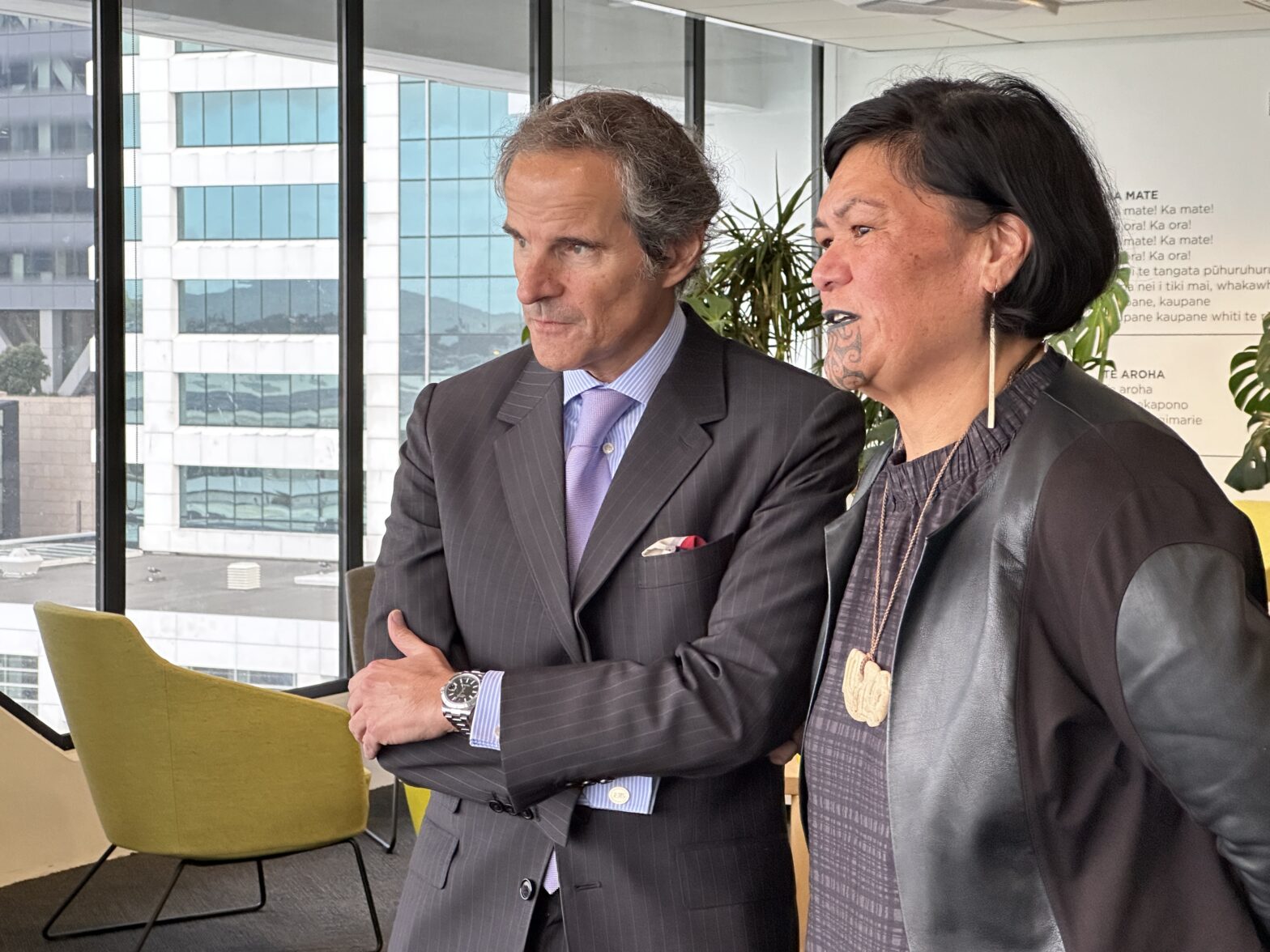On 24 August, Japan’s Tokyo Electric Power Company began discharging advanced liquid processing system-treated water from the disabled Fukushima nuclear power plant into the Pacific Ocean, a process that will continue for the next 30 years, drawing furious reactions from Pacific island neighbors opposed to the plan.
While the water disposal plan had been anticipated, island leaders and environment advocates were not pleased that Japan acted quickly pending determination of its impact on human health and the environment and while possible alternatives were still being proposed.
The United States had no objection, expressing satisfaction with Japan’s assurance that the discharging process would be “safe, transparent and science-based.”
“Since the disaster, Japan has been open and transparent as it has sought to responsibly manage the Fukushima Daiichi site and the eventual release of treated water, proactively coordinating with scientists and partners from across the Indo-Pacific region as well as with the International Atomic Energy Agency, which concluded that Japan’s process is safe and consistent with internationally accepted nuclear safety standards,” said Matthew Miller, spokesperson for the U.S. Department of States.
The Fukushima nuclear power plant was crippled by a 9.1 magnitude earthquake that jolted Japan on 11 March, 2011, killing nearly 20,000 people and injuring thousands.
The long-term discharge of the radioactive water into the sea is part of the decommissioning of the power plant. In a statement posted on its website, TEPCO said it will “devote all of its resources to ensuring the safety and quality of facility operation, speedily obtaining monitoring results and disseminating that information in an accurate and easy-to-understand manner.”
TEPCO’s reassurances, however, have not dampened regional anxiety over the potentially long-term impact of water dumping on the Pacific marine resources.
“Obviously, we have mixed feelings,” Guam Lt. Gov. Josh Tenorio said. “We need a guarantee, which the Japanese government is giving, to make sure that all regulatory agencies across countries and across the Pacific are going to be keeping track and monitoring if there are any negative changes,” Tenorio said. “It’s been 10 years (since the disaster) and I can understand the need for them to close out that disaster site.
“I am just hopeful that all these things they are promising are true and that there will be no impact on the water. None of these decisions are within our control but I think it will be helpful for a lot of us to push the Japanese government to make sure they taking every single precaution,” he added.
Since the issue involves foreign affairs, CNMI Gov. Arnold Palacios said the territory is in no position to engage the Japanese government. “But we’re very concerned,” he said. “I have expressed my concern with the Japanese consul on Saipan. They should be a little bit more forthcoming with information to make sure that they protect not just the CNMI and Guam but the rest of the region.”
The Pacific Elders Voice, a regional group composed of former Pacific island leaders, said Japan’s action represented history repeating itself. “Japan is again testing the limits of the Pacific’s friendship through an absence of consultation, accountability, dialogue and consensus building with Pacific states, NGOs and civil society groups,” PEV said in a statement.
PEV warned that Pacific islanders and future generations will bear the brunt of what they called a “brazen act of environmental vandalism” that will compromise the Pacific’s livelihood resulting from its dependence on nuclear energy.
They said Japan breached the region’s stance against nuclear pollution in all forms and commitment to a nuclear-free Pacific sealed through international and regional agreements such as the 1972 London Convention, the 1982 UN Convention on the Law of the Sea, the 1986 Rarotonga Treaty, the 1986 Noumea Convention and the 1995 Waigani Convention. “We acknowledge that some of these laws and treaties were designed and agreed to by Pacific states with Japan in mind given its previous attempts to dump nuclear waste into the Pacific Ocean from the late 1970s onwards,” PEV said.
Japan’s plan was supported by Palau President Surangel Whipps Jr.
Caleb Udui, Palau’s finance minister, said his country hasn’t changed its position. “What the president said is our position,” he said.
The Cook Islands also has Japan’s back. “This is a demanding situation for all of us, and we need to assess the science in making a decision on the discharge,” Prime Minister Mark Brown said in a statement. “I believe that we have carefully considered the issue within the guidelines provided by (the Pacific Islands Forum) leaders in February.”
The prime minister said was satisfied with the IAEA’s fifth report which stated that the Fukushima power station’s treated water met international safety standards and its commitment that the body will have a permanent monitoring presence at Fukushima.
In Niue, Premier Dalton Tagelagi slammed Japan for proceeding with its plan while its impact on human health and the environment was still unclear. “The majority of Niue are coastal peoples, and the ocean is an integral part of our culture, traditions and livelihoods and we must protect it at all costs,” he said in a statement.
“As a Pacific Island Forum member, Niue stands with its Pacific brothers and sisters and is of the position that Japan should not have gone ahead with the release so soon until there is enough information available to make a fully informed assessment of what the short-term and long-term impacts are to human health and our environment.”
In the Marshall Islands, the Marshall Islands Journal reported that mayors opposed the idea of Fukushima water mixing with “the poison already in the islands.” The Marshallese are still reeling from the impact of the U.S. nuclear tests on Bikini Atoll from 1946 to 1958. “If Japan thinks the radioactive water is safe, then why not bury it in Japan? Why not dump it on land? Land does not move, water does,” the Journal quoted Kwajalein Executive Councilman Telmong J. Kabua as saying.
The Pacific Ocean is the source of sustenance and livelihood for Pacific islanders. According to Conservation International, 10 Pacific island states— Cook Islands, FSM, Kiribati, Marshall Islands, Nauru, Palau Papua New Guinea, Solomon Islands, Tokelau and Tuvalu— derive 4 to 84 percent of all government revenue from tuna. Some 25,000 jobs in the region are also based on Pacific tuna fisheries.
Pacific Islanders consume two to four times more fish than people in other nations. At least 1.4 million metric tons of tuna are caught in the waters of Pacific island countries each year, supplying more than 30 percent of the global market for tuna. The Pacific fishery is currently challenged by overfishing, poaching and climate change.
Seve Paeniu, Tuvalu’s minister of finance and economic development, said he was “concerned, dismayed, disappointed and kind of surprised” that Japan – which has first-hand experience of nuclear material – is now putting nuclear waste into the Pacific Ocean. “Tuvalu collects roughly about 45 percent of its total income from fisheries and fishery resources through access licensing fees to foreign fishing fleets coming to fish in our surrounding waters,” he told RNZ News.
In the Solomon Islands, Prime Minister Manasseh Sogavare condemned Japan’s decision to start releasing the wastewater in the middle of discussions. In a press release, the Solomon Islands said it remained concerned with the IAEA’s report.
“There is an ongoing dialogue with Japan via the Pacific Islands Forum panel, through a Forum panel of scientists and experts to look at the science of Japan’s proposed discharge of the treated nuclear-contaminated water,” the Solomon Islands government said, reiterating its call for Japan to defer its action.
In Tokyo, the environment group WWF Japan is protesting the Japanese government’s decision to ignore alternatives to ocean dumping such as the Citizens Commission on Nuclear Energy’s proposed mortar solidification.
“In addition, the assumptions have changed since the time of the study. One of the assumptions on which the discharge into ocean proposal was chosen was that the current decommissioning plan would eventually be able to stop the generation of contaminated water,” WWF said.
“Under the current decommissioning plan, the fuel debris removal is supposed to improve the situation where contaminated water continues to be generated, and the removal process of fuel debris should have already started this year. However, since there is currently no prospect of achieving the removal process, it is inevitable that the generation of contaminated water will not stop and the period of oceanic discharge will be prolonged.”
WWF warned that the risk of contamination and the economic and social costs will continue to increase, “shaking the premise of the discharge option, which was considered ‘realistic from a technical and institutional standpoint.
This story was written by Mar-Vic Cagurangan, originally published at Pacific Island Times on 04 September 2023, reposted via PACNEWS.




